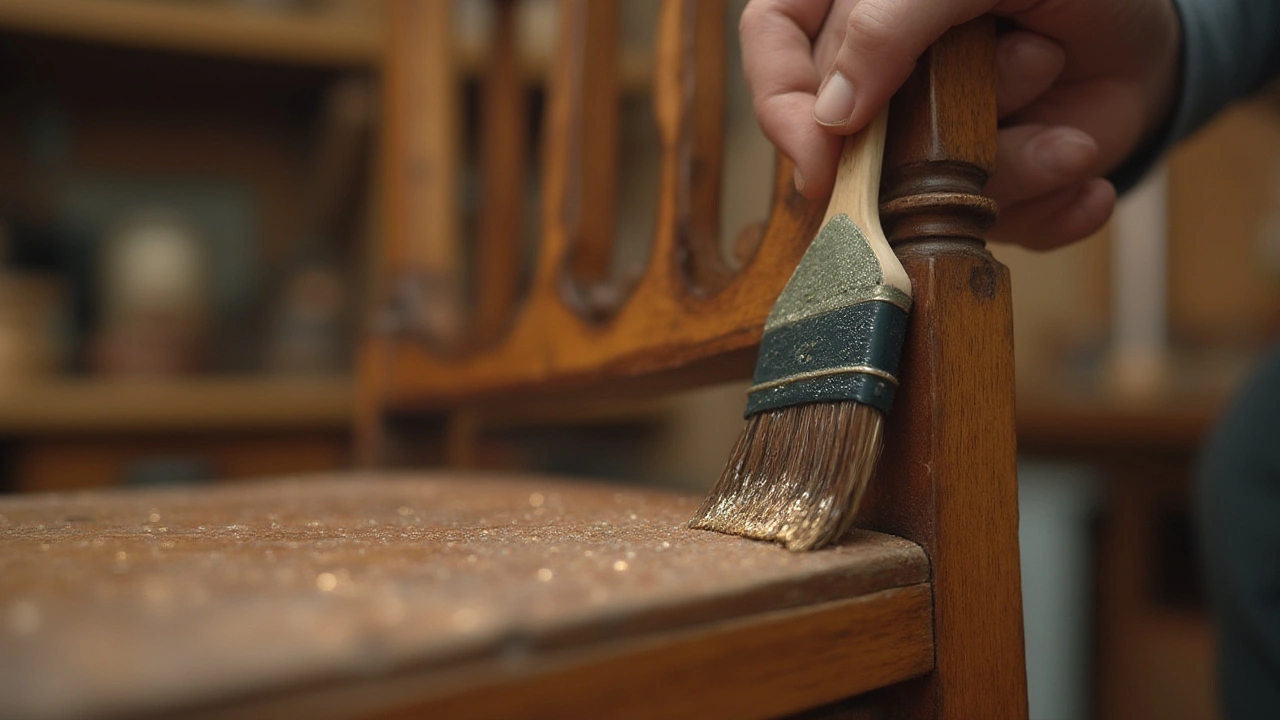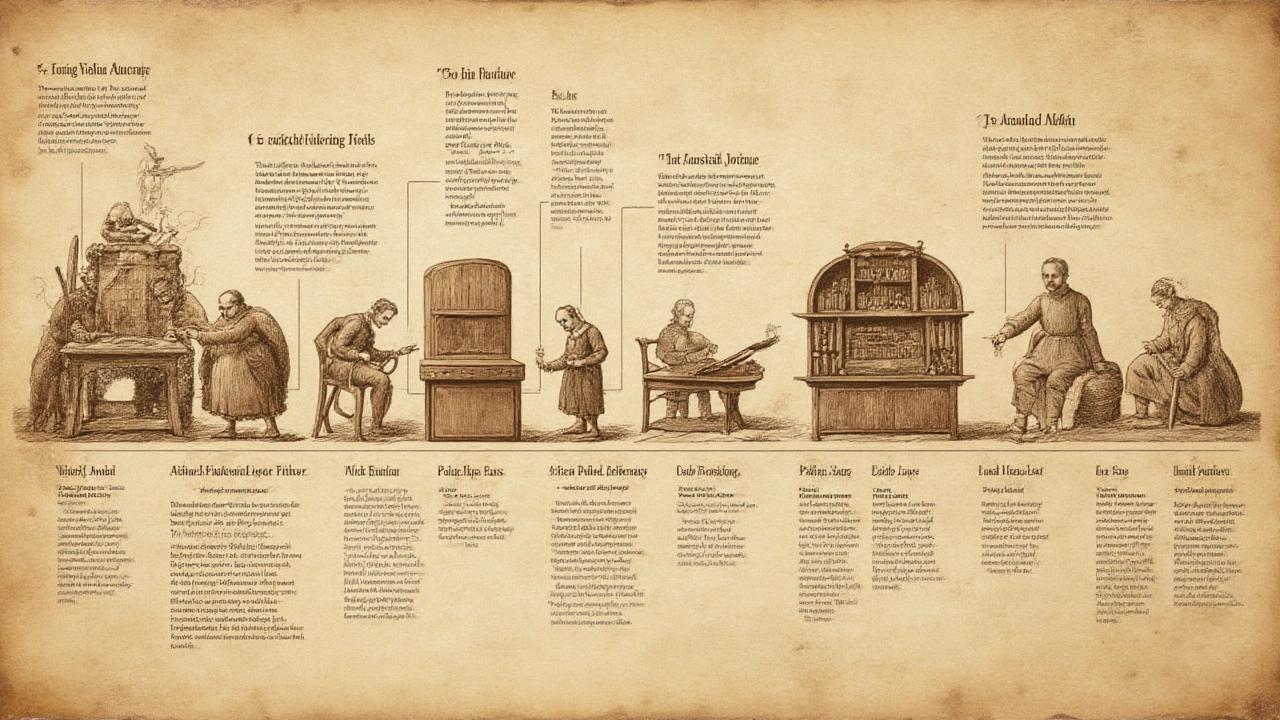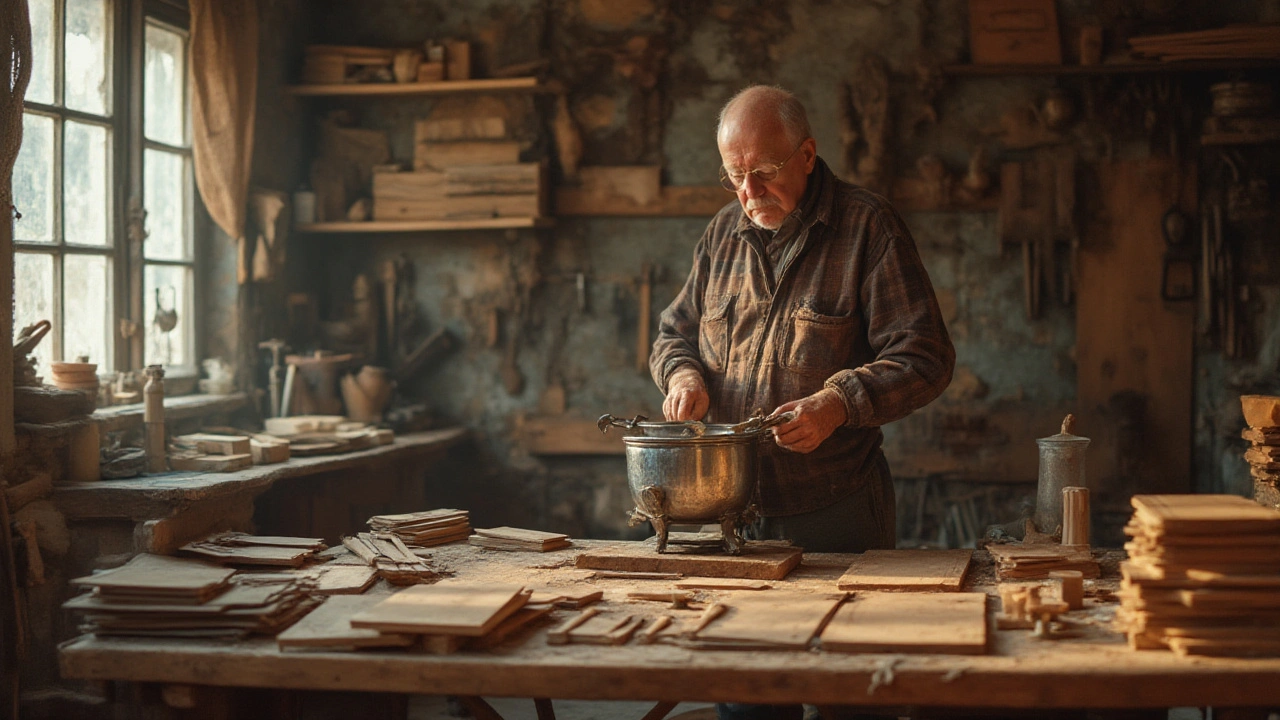Sticky hands, antique furniture, and the world’s tiniest pearls have more in common than you might think. Hot pearl glue—a funky, somewhat old-school adhesive—has been holding things together long before hardware stores started selling plastic squeeze bottles full of quick-dry glop. But why do artists, woodworkers, and restorers still reach for a bag of pearl glue when every aisle drips with modern glues? Let’s crack open this odd, fascinating material and see why it keeps making a return, project after project, century after century.
What Is Hot Pearl Glue and Where Does It Come From?
Hot pearl glue isn’t made from pearls, so don’t let the name trick you. This glue is animal-based, made by breaking down collagen, mostly from cow and rabbit hides or bones. Imagine years ago when cabinet makers and violin builders would use giant glue pots—this is the same old recipe, just refined into round, tiny beads resembling tiny pearls. These beads get their name not from the sea, but their look—hard, glossy, and almost beautiful in a weird way. When you see it, you might think you spilled a jar of oversized caviar all over your workbench.
Back in the 1700s, glue from animal parts was standard. The pearls are just a processed, dried format that’s easier to ship, store, and measure out. To make glue from them, all you do is soak the beads in water, then gently warm the mixture until everything blends into a silky, sticky paste. Unlike regular bottled glue, this stuff gets sticky only when warm. Once it cools and sets, it holds strong—really strong—in a way that lets you undo your work later with a little heat and water. That’s a big reason why restorers of old paintings, books, and furniture swear by it. You can imagine antique shops packed with faint smells of warm glue, a scent full of secrets.
But why did this approach survive when so many bigger factories switched to synthetic options? The answer sits in the way it bonds: hot pearl glue creates joints that last for decades, but won’t outlast the object itself to the point you can’t fix it. That’s the sweet spot—strong enough, but still reversible when needed. Plus, there’s something a little magical about melting centuries of tradition in a tiny pot in your own shop.
Food for thought—well, not literally. This glue is unapologetically animal-based. Some consider it a byproduct of the meat industry, so if you follow a plant-based or vegan lifestyle, this might not be up your alley. Still, for those who want natural adhesives without plastics, it’s a top pick. And if you’re curious about where it stands in the toxic lineup: hot pearl glue is surprisingly safe. It has almost no dangerous fumes, and cleaning up just means lots of hot water and a rag. Not all glues can boast that.
Peeking at the numbers, hot pearl glue is about 85% protein, with water and trace minerals making up the rest. It softens at about 60°C (140°F) and can reach a bonding strength of 300–350 psi. For wood joints, that’s actually on par—or even stronger—than some of the bottled glues you might find today.

How to Use Hot Pearl Glue: Tips, Tricks, and Real-World Scenarios
Getting sticky with hot pearl glue isn’t as mysterious as it sounds, but it does take a gentle hand. You’ll need the beads, water, a small glue pot (or a double boiler for a DIY version), and whatever you want to glue. First, soak the pearls in water overnight or until they plump up, almost like they’re rehydrating themselves for their moment of glory. For small batches, just enough to cover the beads is fine. If you’re gluing lots of things—furniture repair, bookbinding, or even building a musical instrument—scale up as needed.
Once soaked, you warm the mixture slowly. Turn the heat too high, and you’ll cook the protein, ruining its stickiness. You want the water just steamy—not boiling. The end result is a creamy, almost syrupy glue with a faint, earthy smell. Apply it quickly! Unlike bottled glues, hot pearl glue sets faster as it cools, and it’ll lose tackiness in a minute or less if you dawdle. For tricky assemblies or tight-fitting repairs, have everything ready in advance—no delays.
This glue loves rough wooden surfaces. It soaks into open pores and creates a bond that acts like tiny little hooks, holding things tight as it dries. For veneer repair, bookbinding, or even making your own art panels, it’s top notch. The quick set time means you don’t need hours of clamping—just a few minutes, and the joint is already taking hold. For larger jobs, you can reheat the glued surfaces with a heat gun or a hairdryer if you need to reposition things.
Here’s a handy step-by-step:
- Measure the required amount of pearls—think a tablespoon for small repairs, up to a half cup for bigger jobs.
- Soak in water overnight, or at least a couple of hours.
- Gently melt the soaked beads in a glue pot or double boiler at 60–65°C (140–150°F).
- Stir until the glue is smooth, then apply to the surfaces you want to bond.
- Join pieces while the glue is warm—press tight until it cools and stabilizes.
If you want your glue to stay flexible or last longer in a humid environment, many old-timers add a little urea or salt to the mix. There are even recipes that use a splash of vinegar or a few drops of glycerin for extra flexibility—handy for delicate jobs.
A few warnings—never leave your glue pot running dry, or the glue will burn and turn useless. And don’t use metal containers with long-held glue. Old glue can rust iron, leaving stains on wood and dark spots in your finished work. Most folks prefer ceramic or glass pots for this reason. When you’re done, leftovers keep well in the fridge for a couple of weeks—just reheat gently when it’s time for the next project.
Common trouble spots? Sometimes folks complain about "beading" or poor adhesion, usually from using too little glue, adding too much water, or applying it too cold. If you’re working in a chilly room, warm your pieces with a hairdryer first so the glue flows and sticks instead of chilling and setting before you finish.
One neat trick—hot pearl glue is perfect for creating reversible joints. In restoration, this means you can unglue an antique with gentle heat and water, repair internal damage, then glue it all back together as if nothing ever happened. Try that with synthetic glue… it’s not happening!
| Characteristic | Hot Pearl Glue | PVA (White Glue) |
|---|---|---|
| Origin | Animal collagen | Petrochemical |
| Bond Strength (psi) | 300–350 | 250–350 |
| Reversible? | Yes (heat/water) | No |
| Toxic fumes | None | Low |
| Cleanup | Hot water | Soap and water |
| Clamping time | 1–5 minutes | 10–30 minutes |
| Longevity | Decades (in dry settings) | Decades |

Practical Uses, Unusual Applications, and Revival in Modern Projects
Hot pearl glue is one of those secret-weapon materials in a lot of creative circles. You’ll find it in high-end woodworking shops, violin workshops, and even on the benches of book conservators. The reasons go beyond just tradition. For musical instruments, for example, the reversibility of this glue is essential. Violins, cellos, and other string instruments must sometimes be opened for repairs—a process doomed to disaster if made with permanent glue.
Ever wondered how intricate marquetry or inlaid wood designs stay pristine after generations? Hot pearl glue is the silent partner in those works. Its fast set time helps wrangle delicate pieces together, and its flexibility means art pieces can absorb a little movement without cracking apart. Even theater prop makers use it for lightweight, repairable constructions, trading the ultra-durability of synthetic glues for adjustability and easy fixes.
One quirky use: hot pearl glue is a favorite for gilding. If you ever saw picture frames sparkling with gold leaf, chances are it was pearl glue holding that gold in place. Its tacky texture, combined with the ability to "reactivate" with a quick pass of steam or warmth, makes it just right for fussy jobs. Paper conservationists appreciate its clarity and mild acidity, both of which prevent yellowing over decades.
More recently, crafters and eco-builders have revived hot pearl glue for other reasons—totally plastic-free, naturally compostable, and no need for harsh chemicals. If you’re aiming for an all-natural home studio, it’s hard to beat this option. The only hitch is, it’s not waterproof. So, skip using it on outdoor furniture or things that might get soaked. In dry, indoor settings, though, it sticks around (literally and figuratively) for years.
If you’re interested in restoration, start with small projects—maybe a loose chair joint from a vintage set, or a chipped piece of wooden molding. Practice the temperature and timing before you take on a priceless violin or your family’s 200-year-old book. Experience is everything here, and the tactile nature of working with hot pearl glue is pretty addictive.
One last fact—while there are vegan and synthetic alternatives, nothing matches the "creep" (the ability for the glue to shift just slightly under pressure) of true pearl glue. This property is what makes it suitable for certain high-stress joints. For anyone doing marquetry, lutherie, or frame making, this glue becomes a badge of honor—a little declaration that you care about tradition and repairability.
If you ever walk into an old-school woodworking shop and glimpse what looks like marbles in a jar, now you know: you’re staring at a material with more stories than most antiques it repairs. And a few lucky projects might just stick around for another hundred years, held tight by the hidden strength of hot pearl glue.


10 Responses
Wow, this post about hot pearl glue really brings to light a fascinating topic that many woodworking enthusiasts might overlook! The natural origin of this adhesive makes it quite an interesting choice over synthetic glues, which often contain chemicals that aren’t as environmentally friendly.
In woodworking and restoration, every detail counts, especially when it comes to preserving the integrity and authenticity of the piece. The post nicely outlines how this glue’s unique properties can benefit these delicate tasks.
However, for those new to using hot pearl glue, I would strongly suggest paying close attention to the safety tips when handling it. Working with heated adhesives can pose risks if not handled properly, so always wear protective gloves and work in a well-ventilated space.
Do any of you have personal tips or tricks for working with this glue in tricky restoration projects? It would be great to share experiences!
Seriously, I can’t stress enough how underrated hot pearl glue is in woodworking circles here in the US. Most folks rush to grab the latest synthetic adhesives without realizing the superior bonding strength and durability that natural glues like this offer.
Especially when restoring antique furniture, synthetic alternatives often degrade or cause damage over time—completely defeating the purpose of preservation! Hot pearl glue is a game changer if you want long-lasting results that respect the original materials.
Also, the jargon-heavy explanation about its thermal properties and curing process is spot-on, but I’d add that understanding the exact temperature control is critical. Too hot, and you mess with the glue’s consistency; too cool, and it won’t properly activate.
Does anyone here use specialized temperature gauges or tools when working with hot pearl glue?
While many enthusiasts rave about hot pearl glue, it is requisite to adopt a circumspect stance towards its practicality. The inherent limitations regarding its thermal sensitivity and the meticulous application technique significantly constrain its usability in contemporary woodworking endeavors.
Moreover, the alleged aesthetic superiority is arguably overstated. Modern adhesives, with advanced polymer formulations, offer superior bond resilience and water resistance, aspects crucial in rigorous conditions.
In my experience, reliance on traditional adhesives can unnecessarily prolong project timelines and incur higher costs given the precautions necessary. A pragmatic approach would balance respect for tradition with the efficiency and reliability of current chemical adhesives.
Haha, gotta say, I’m surprised folks get so worked up over glue. I mean, hot pearl glue sounds fancy but isn’t it basically just fancy melted glue sticks you had as a kid? I’m all for tradition and preservation, but sometimes you gotta wonder if all these precautions are worth the hassle.
Still, can’t deny the charm it must add to an old woodworking project. Like, there’s something really satisfying about using a glue that nature made, not some chemical cocktail, right?
Also, does anyone actually track their glue temperatures with some fancy gadget or do you guys eyeball it like pros?
Hey, thanks for bringing up hot pearl glue—it’s such a specialized topic, and I appreciate the beginner-friendly tips. Sometimes with woodworking, the jargon gets so overwhelming, you just wanna dive in without feeling like you need a degree first.
One thing I always worry about though is the mess—does this glue dry quickly enough to avoid long waits? And if it’s heated, I wonder how long the working time lasts before it cools and sets? I’d love to hear from folks who’ve had hands-on experience.
Also, keeping safe when using heated adhesives is super important—I've had minor burns using hot glue guns, and I wouldn't want the same with hot pearl glue.
Such a well rounded overview of hot pearl glue! I was particularly struck by the emphasis on its natural properties. In a world saturated with chemical-heavy products, opting for natural adhesives seems like a step forward for sustainability.
Yet, I wonder about the accessibility of hot pearl glue globally—is it widely available or mostly confined to niche markets and expert craftsmen? The post mentions safety, which leads me to ask: are there any particular ventilation or environmental concerns while heating the glue?
Lastly, protocols for disposal or cleanup would be interesting—does hot pearl glue pose any unique challenges once dried?
Let me tell ya, this hot pearl glue thing sounds like the secret sauce some woodworkers have been keeping under wraps.
But seriously, the potential for natural adhesives to minimize environmental impact in restoration work is huge. And props for highlighting the importance of timing and temperature — I’ve burned more glue than I care to admit trying to speed things up!
Does anyone use hot pearl glue outside woodworking? I’m curious if artists in other fields rely on it.
Also, what’s the cleanup like if you get it on your skin or tools? Asking for a friend.
Honestly, this post made me think twice about how everyone’s always chasing the new, next best glue. Hot pearl glue? Sounds like one of those old-school things that really deserves another shot.
But lemme be real — does it stiffen fast? Because WAITING ON GLUE TO DRY can be the most soul crushing part of a project, especially when you’re hyped and ready to finish.
And seriously, what’s the smell like? Some natural adhesives can be kinda funky and make you want to run out of the workshop.
Would love a comparison between this and the popular PVA or epoxy glues for bonding strength, too.
It is truly intriguing to reflect on the origins and applications of hot pearl glue within the realm of woodworking and restoration; this adhesive, hailing from a natural lineage, stands as a testament to the marriage between tradition and function.
However, one must not disregard the elaborate processes involved in mastering its application; the delicate balance of temperature and curing demands not only precision but also an intimate understanding of the material properties.
In an age dominated by synthetic convenience, reconsidering such ancient adhesives invites discourse on sustainability, historical fidelity, and artisanal integrity. How often do we pause to acknowledge the painstaking efforts behind a single well-restored piece?
Not to be the grammar police, but just a quick note: 'prized' in the post should be 'praised' if you mean it’s highly regarded! Anyways, hot pearl glue is quite fascinating, especially because it’s a natural adhesive, which is a rarity nowadays.
I’d be curious to know more about the specific ingredients and how they impact the adhesive strength and longevity. Readers often overlook how chemical composition affects usability in particular conditions.
From what I’ve gathered, natural adhesives sometimes struggle with humidity and temperature fluctuations—are there recommended storage methods for this type of glue?